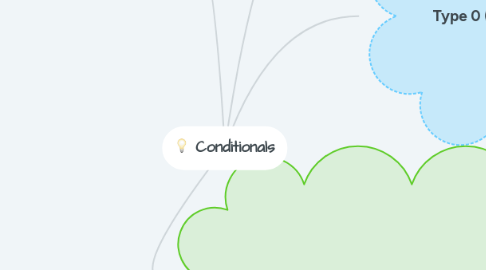
1. Type 2 (Second Conditional)
1.1. Usage
1.1.1. Express an imaginary or unlikely situation in the present or future
1.1.1.1. If John were here, he would tell us what to do.
1.2. From
1.2.1. If + S + V.2 , S+ would + base form
1.2.2. S + would + base form + if + S + v.2
2. Type 0 (Zero Conditional)
2.1. Usage
2.1.1. express something which is always true
2.1.1.1. If you leave meat in the oven for a long time, it burns
2.1.2. express something which is laws of nature
2.1.2.1. If the temperature falls below 0 c, water turns into ice.
2.2. From
2.2.1. If + Present Simple, Present Simple
2.2.1.1. If + S + V.1, S+ V.1
2.2.2. Present Simple + If + Present Simple
2.2.2.1. S+V.1 if S + V.1
3. What is Conditional clause?
3.1. A conditional clause consists of two parts: the if-clause (hypothesis), which begins with the word if, and the main clause, which shows the result of the hypothesis.
3.2. When the if-clause comes before the main clause , we separate them with a comma. When the main clause comes before the if-clause, we do not use a comma.
4. Type 1 (Frist Conditional))
4.1. Usage
4.1.1. Express a possible situation in the present or future
4.1.1.1. If he does not get here soon, we will have to start the meeting without him.
4.1.2. From
4.1.2.1. If + S + V.1, S+ will + base form (infinitive)
4.1.2.2. S + will + base form + if + S + V.1
